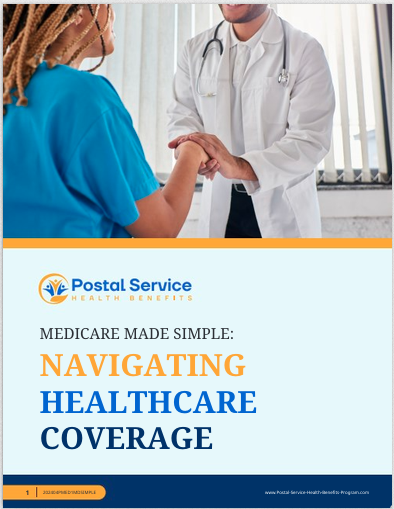Key Takeaways
-
The 2025 Postal Service Health Benefits (PSHB) transition introduces significant changes tailored to USPS employees and retirees, replacing the previous Federal Employees Health Benefits (FEHB) system.
-
Understanding enrollment, Medicare integration, and cost-sharing options is key to making informed decisions about your healthcare coverage under PSHB.
A New Chapter in USPS Health Benefits
The 2025 transition to the Postal Service Health Benefits (PSHB) program is not just a shift in administrative processes. It represents a complete overhaul of how health benefits are provided to Postal Service employees, retirees, and their families. Whether you’re an active employee or a retiree, you’re navigating a system specifically tailored for the USPS workforce. Let’s break down what this means for you and how to maximize the benefits available.
What Is PSHB?
PSHB replaces the Federal Employees Health Benefits (FEHB) program for USPS employees and annuitants starting January 1, 2025. This program is exclusively for the Postal Service workforce, designed to address their unique needs. Here are some important highlights:
-
Tailored Coverage: PSHB plans are created with USPS-specific health needs in mind, including provisions for retirees and family members.
-
Separate Administration: While similar to FEHB in some aspects, PSHB operates independently, with its own set of rules, premiums, and benefits.
Understanding these distinctions can help you make informed choices during enrollment periods and when evaluating your healthcare options.
Navigating Enrollment: Key Timelines and Requirements
Enrollment in PSHB requires attention to detail, especially during specific periods. If you miss these windows, your options become limited unless you experience a Qualifying Life Event (QLE).
Open Season
The 2024 Open Season ran from November 11 to December 13, 2024. This period allowed USPS employees, retirees, and their eligible family members to enroll or make changes to their health plans for coverage effective January 1, 2025.
Special Enrollment Periods (SEPs)
SEPs provide flexibility for individuals facing life changes, such as marriage, the birth of a child, or loss of other health coverage. If you qualify, you can adjust your plan outside the usual Open Season.
Automatic Enrollment
If you were already enrolled in FEHB in 2024, you were automatically transitioned to a corresponding PSHB plan. However, reviewing your coverage remains essential to ensure it meets your needs.
Medicare Integration: What You Need to Know
For Medicare-eligible USPS retirees and their family members, the PSHB transition brings new opportunities and responsibilities.
Enrollment in Medicare Part B
Under the new system, Medicare Part B enrollment is mandatory for most Medicare-eligible PSHB enrollees. Exceptions include retirees who:
-
Retired on or before January 1, 2025.
-
Were 64 years or older as of January 1, 2025, and chose not to enroll in Part B.
If you fall into these categories, check whether these exemptions apply to you. For others, coordinating Medicare with PSHB coverage often results in significant savings.
Benefits of Medicare Coordination
PSHB plans offer enhanced benefits for those enrolled in Medicare, including:
-
Part B Premium Reimbursements: Many PSHB plans reimburse a portion of your Part B premium.
-
Cost Sharing Reductions: Deductibles, copayments, and coinsurance may be lower for Medicare-integrated plans.
Ensuring you’re enrolled in both Medicare and PSHB helps you maximize these advantages.
Cost and Coverage: Breaking Down the Numbers
Premiums
PSHB premiums vary by plan and enrollment type (self-only, self-plus-one, or family). While these costs are tailored to USPS employees, they reflect national healthcare trends, balancing affordability with comprehensive coverage.
Deductibles and Out-of-Pocket Limits
PSHB plans come with deductibles and out-of-pocket caps. For 2025, it’s essential to review your plan’s details to understand:
-
In-Network Benefits: Lower costs when using preferred providers.
-
Out-of-Network Costs: Higher expenses if you go outside the plan’s network.
Understanding these details helps you avoid unexpected healthcare costs.
What About Prescription Drugs?
One major improvement under PSHB is the enhanced prescription drug coverage for Medicare-eligible members. These individuals automatically receive prescription benefits through a Medicare Part D Employer Group Waiver Plan (EGWP) tied to their PSHB plan. This includes:
-
$2,000 Out-of-Pocket Cap: A new feature for 2025, ensuring you never pay more than $2,000 annually for prescription drugs.
-
Payment Plans: Options to spread high prescription costs over the year, reducing the financial burden.
If you’re not yet Medicare-eligible, PSHB plans still provide robust prescription coverage, but it’s wise to compare options carefully during Open Season.
Qualifying Life Events and Coverage Adjustments
Life is unpredictable, and PSHB accounts for that with flexibility through Qualifying Life Events (QLEs). These events allow you to change your coverage outside Open Season. Examples include:
-
Marriage or divorce.
-
Birth or adoption of a child.
-
Loss of other health insurance.
Each QLE has a specific window for making changes. Missing this deadline could mean waiting until the next Open Season to adjust your coverage.
Staying Informed: The Role of Communication
The transition to PSHB emphasizes the importance of staying informed. USPS employees and retirees receive Annual Notices of Change (ANOCs), detailing:
-
Changes to premiums and benefits.
-
Updates to coverage terms.
-
New plan options.
Reviewing these notices ensures you remain aware of any adjustments that could impact your coverage. Additionally, the USPS provides resources, including online tools and help desks, to assist with plan comparisons and questions.
Benefits Beyond Health Coverage
The PSHB transition also highlights additional benefits designed to support USPS employees and retirees. These include:
-
Wellness Programs: Many PSHB plans offer incentives for participating in health and wellness initiatives, like gym memberships or preventive care screenings.
-
Telehealth Services: Access to virtual healthcare providers makes it easier to address health concerns without leaving your home.
-
Supplemental Benefits: Vision, dental, and hearing coverage options remain widely available, offering comprehensive care beyond traditional medical needs.
Exploring these benefits can help you fully utilize your PSHB plan.
Why the Transition Matters
The move to PSHB signifies more than just a name change. It’s an opportunity for USPS employees and retirees to access health benefits that directly address their needs. From cost-sharing improvements to enhanced coordination with Medicare, the program is designed to simplify healthcare decisions while maintaining robust coverage.
Preparing for the Next Steps
As you settle into the PSHB system, consider taking these steps:
-
Review Your Plan: Ensure your selected plan aligns with your healthcare needs.
-
Understand Medicare Requirements: If eligible, coordinate your Medicare and PSHB benefits for optimal coverage.
-
Stay Proactive: Keep track of Open Season dates and ANOCs to stay updated on any changes.
By actively engaging with your benefits, you can make the most of what PSHB has to offer.
Embrace Your PSHB Benefits
The 2025 transition to PSHB redefines healthcare for USPS employees and retirees, creating a tailored experience that addresses your unique needs. Whether you’re exploring plan options, integrating Medicare, or utilizing supplemental benefits, PSHB is your gateway to comprehensive, affordable healthcare coverage. Take charge of your health and make informed decisions to secure a healthier future.






